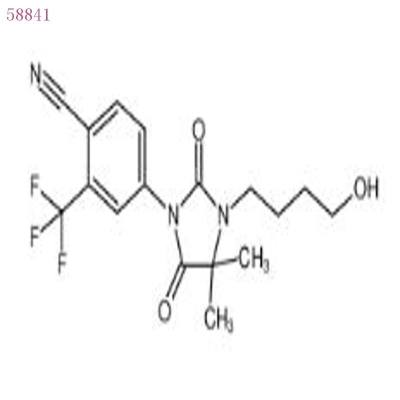-
Categories
-
Pharmaceutical Intermediates
-
Active Pharmaceutical Ingredients
-
Food Additives
- Industrial Coatings
- Agrochemicals
- Dyes and Pigments
- Surfactant
- Flavors and Fragrances
- Chemical Reagents
- Catalyst and Auxiliary
- Natural Products
- Inorganic Chemistry
-
Organic Chemistry
-
Biochemical Engineering
- Analytical Chemistry
-
Cosmetic Ingredient
- Water Treatment Chemical
-
Pharmaceutical Intermediates
Promotion
ECHEMI Mall
Wholesale
Weekly Price
Exhibition
News
-
Trade Service
| Worker ants become queens and only need to regulate one molecule |
The scythe ant will do something unusual: transform from a worker ant to a queen
.
Scientists have discovered that a protein called Kr-h1 can respond to social regulatory hormones to coordinate this complex social transformation
.
This surprising discovery was published in Cell on November 4
"Animal brains are plastic, that is, they can change their structure and function according to the environment
," said Roberto Bonasio of the Perelman School of Medicine at the University of Pennsylvania.
"This process also occurs in the human brain-think Think about the changes in behavior in adolescence, but the molecular mechanisms that control this process are not fully understood
In an ant colony, worker ants maintain the colony by looking for food and resisting invaders, while the main task of the queen is to lay eggs
.
However, it is the same genetic instructions that lead to these completely different social roles and behaviors
By studying ants, Bonasio and colleagues, including Shelley Berger, also from the University of Pennsylvania, wanted to understand how genes "turn on" or "off" affect brain function and behavior
.
Because the adult individuals of the ant ant can be transformed from a worker to a queen, they are very suitable for research objects
In order to study the potential molecular events leading to this conversion, a research team led by co-first authors Janko Gospocic and Karl Glastad developed a method to isolate neurons from ants and keep them alive in plastic petri dishes in the laboratory.
.
This allowed the research team to explore how cells respond to environmental changes, including changes in hormone levels
These studies further confirmed that the two hormones, juvenile hormone and ecdysone, present at different levels in worker ants and queens, produced different gene activation patterns in the brains of these two ants
.
The most surprising thing is that both of these hormones affect cells by activating a protein called Kr-h1
"This protein can regulate the different genes of worker ants and queens, preventing ants from making'inappropriate social' behaviors
.
" Berger said, "that is, Kr-h1 can maintain the boundaries between social hierarchies and ensure worker ants Keep working and the queen will continue to act like a queen
"We did not expect that the same protein can silence different genes in the brains of different ants, thereby inhibiting the queen's behavior and the behavior of the worker queens
.
" Bonasio added
.
These findings reveal the important role that social regulatory hormones and gene regulation play in the transition of animal brains from one genetic model and social hierarchy to another
.
"The key message is that, at least in ants, multiple behavior patterns are specified in the genome at the same time, and gene regulation can have a great impact on the behavior of organisms
.
" Berger said, "In other words, every ant can play any role.
A role, depending on which gene switch is on or off
.
"
Researchers believe that the significance of this discovery may be far more profound than understanding the behavioral plasticity of ants and other insects
.
"It is easy to speculate that related proteins may have similar functions in more complex brains, including their own brains,
" Bonasio said.
"The discovery of these proteins may help us restore the plasticity of our brains someday, such as aging brains.
.
"
In addition, a single factor can inhibit different genes and behaviors in different brains.
This discovery raises an important question as to how the dual functions of this protein and other similar proteins can be regulated
.
In future studies, the researchers plan to explore the role of Kr-h1 in other organisms
.
The researchers also plan to explore how the environment affects gene regulation at the epigenetic level through the presence or absence of certain chemical markers on DNA, and how this, in turn, affects the plasticity and behavior of the brain
.
(Source: Feng Lifei, China Science News)
Related paper information: https://doi.
org/10.
1016/j.
cell.
2021.
10.
006
org/10.
1016/j.
cell.
2021.
10.
006 https://doi.
org/10.
1016/j.
cell.
2021.
10.
006







